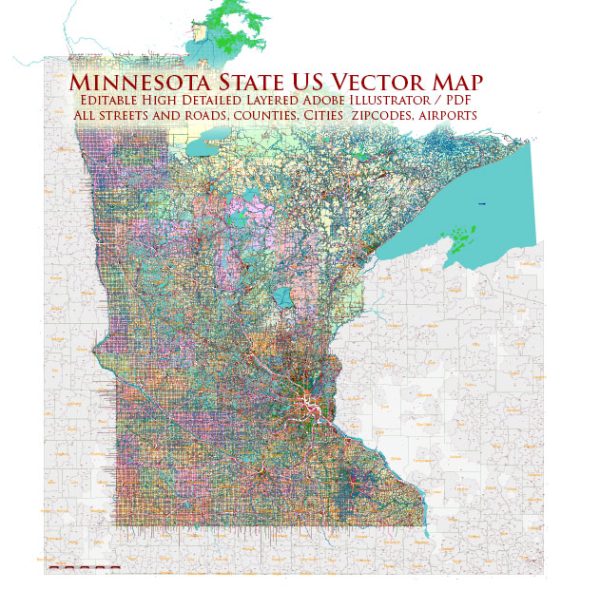The urban development of the state of Minnesota in the United States is characterized by a complex interplay of historical, economic, and social factors. Here is a brief overview of the key aspects of urban development in Minnesota:
- Indigenous Settlements: Before European settlers arrived, the area now known as Minnesota was inhabited by various Native American tribes. The indigenous people established their settlements based on the availability of resources, such as waterways and fertile land.
- European Settlement and Expansion: European exploration and settlement in Minnesota began in the 17th century. The fur trade, led by companies like the Hudson Bay Company, played a significant role in the early economic development of the region. Cities like Duluth and St. Paul grew around trading posts and transportation hubs.
- Transportation Networks: The development of transportation networks, particularly the expansion of railroads in the 19th century, played a crucial role in shaping urban growth. Cities like Minneapolis and St. Paul became major transportation and milling centers, connecting the region’s agricultural resources to national markets.
- Economic Transformation: The late 19th and early 20th centuries saw the transformation of Minnesota’s economy. The state became a hub for industries such as lumber, flour milling, and iron ore mining. Minneapolis, in particular, emerged as a major milling center, earning the nickname “Mill City.”
- Post-War Suburbanization: Like many other states, Minnesota experienced significant suburbanization in the post-World War II era. The development of the interstate highway system and the availability of affordable housing outside urban cores led to the growth of suburbs around cities like Minneapolis and St. Paul.
- Urban Renewal and Redevelopment: In the mid-20th century, urban renewal projects aimed at revitalizing city centers and addressing issues of blight and overcrowding. These efforts often involved the demolition of older buildings and the construction of modern infrastructure. Some areas, such as the Gateway District in Minneapolis, underwent significant changes during this period.
- Diversification of Economy: In recent decades, Minnesota’s economy has diversified, with growth in sectors such as healthcare, technology, and finance. This has contributed to the development of urban areas as centers for innovation and knowledge-based industries.
- Cultural and Recreational Amenities: Urban development in Minnesota also includes a focus on cultural and recreational amenities. Cities like Minneapolis have invested in theaters, museums, parks, and sports facilities, contributing to a vibrant urban lifestyle.
- Sustainable Development: In the 21st century, there is an increasing emphasis on sustainable urban development, with efforts to promote public transportation, green spaces, and energy-efficient infrastructure.
Understanding the history of urban development in Minnesota requires considering the state’s economic shifts, transportation advancements, and societal changes, all of which have contributed to the diverse and dynamic urban landscape seen today.



 Author: Kirill Shrayber, Ph.D.
Author: Kirill Shrayber, Ph.D.